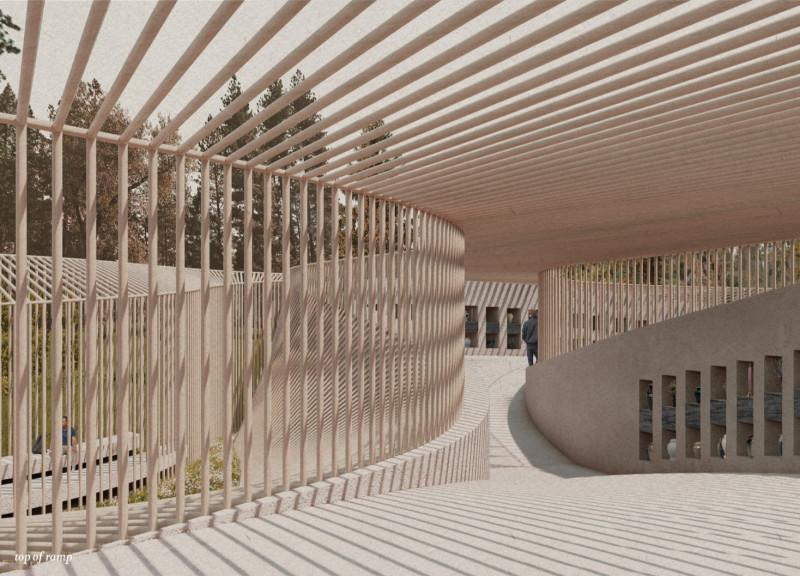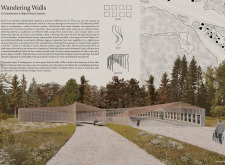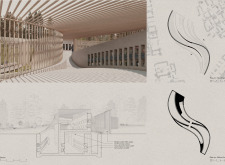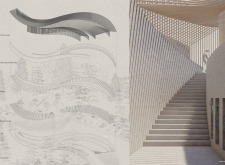5 key facts about this project
Functionally, the Wandering Walls columbarium serves as a final resting place for the remains of loved ones, allowing families to memorialize and honor those they have lost. The design is divided into three distinct areas that guide visitors through different atmospheres: openness, enclosure, and serenity. This progression mimics the emotional journey often experienced in moments of grief, from the initial confrontation with loss to a deeper state of introspection and peace.
The architectural layout of the columbarium emphasizes a seamless integration with the surrounding landscape, characterized by gently curving paths that encourage exploration and movement. Visitors enter an open area that welcomes them and invites reflection while establishing a clear connection to the forest beyond. As they proceed further into the space, visitors encounter areas of enclosure, where the architecture creates a sense of privacy and seclusion. This design approach allows individuals to find personal moments of contemplation without feeling isolated from the communal aspects of remembrance.
The materiality of the project plays a crucial role in its overall impact. The primary materials utilized in the construction of the columbarium include concrete, wood, granite, and glass. Concrete serves as the structural basis, establishing a sense of permanence appropriate for such a significant purpose. Wood contributes warmth and a tactile quality, connecting the building to its forest setting. The inclusion of granite for interior surfaces presents a dignified touch, while strategically placed glass elements enhance the natural light within the space, allowing different visual experiences throughout the day.
A unique design aspect of the Wandering Walls is its emphasis on the interplay of light and shadow. The overhead trellis-like canopy filters sunlight, creating dynamic visuals that change with the time of day. This thoughtful use of light fosters an atmosphere conducive to contemplation and highlights the themes of memory and transience inherent in the project. By integrating natural light into the design, the columbarium transcends the typical solemnity associated with such spaces, inviting visitors to engage in a more meaningful dialogue with their surroundings.
Moreover, the project recognizes the significance of community in the grieving process. The layout facilitates both solitary reflection and communal gatherings, supporting a range of visitor experiences. This approach is crucial in creating an environment where families can honor individual memories while also finding solace in shared experiences of loss.
Overall, the Wandering Walls project stands out for its sensitive approach to memorialization and its thoughtful integration of architecture within the natural landscape. By addressing the complexities of grief through well-considered spatial organization, materiality, and experiential design elements, the columbarium serves as a place of both individual reflection and collective remembrance. To gain deeper insights into this project, including architectural plans, sections, and design ideas, readers are encouraged to explore the detailed presentation of Wandering Walls.


























